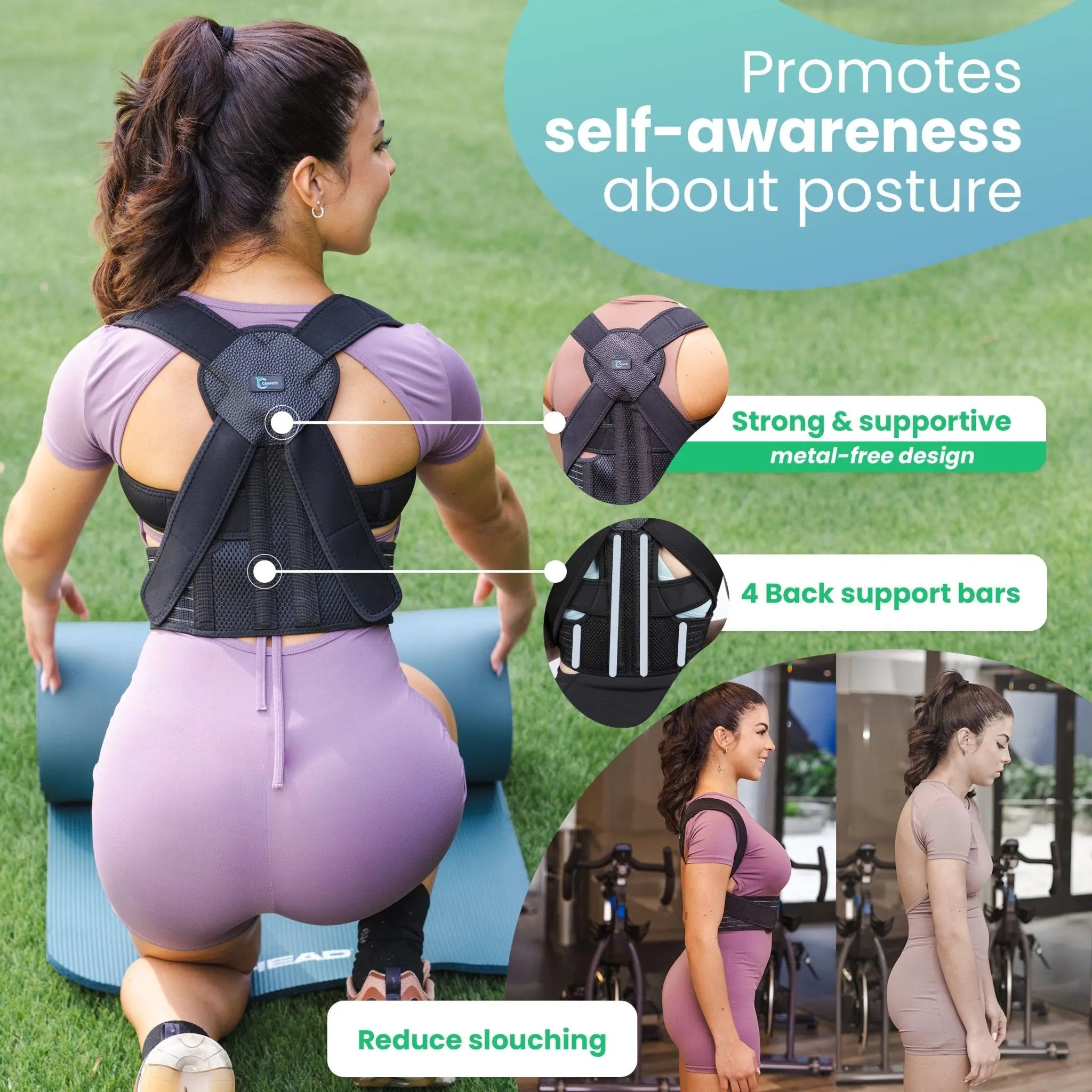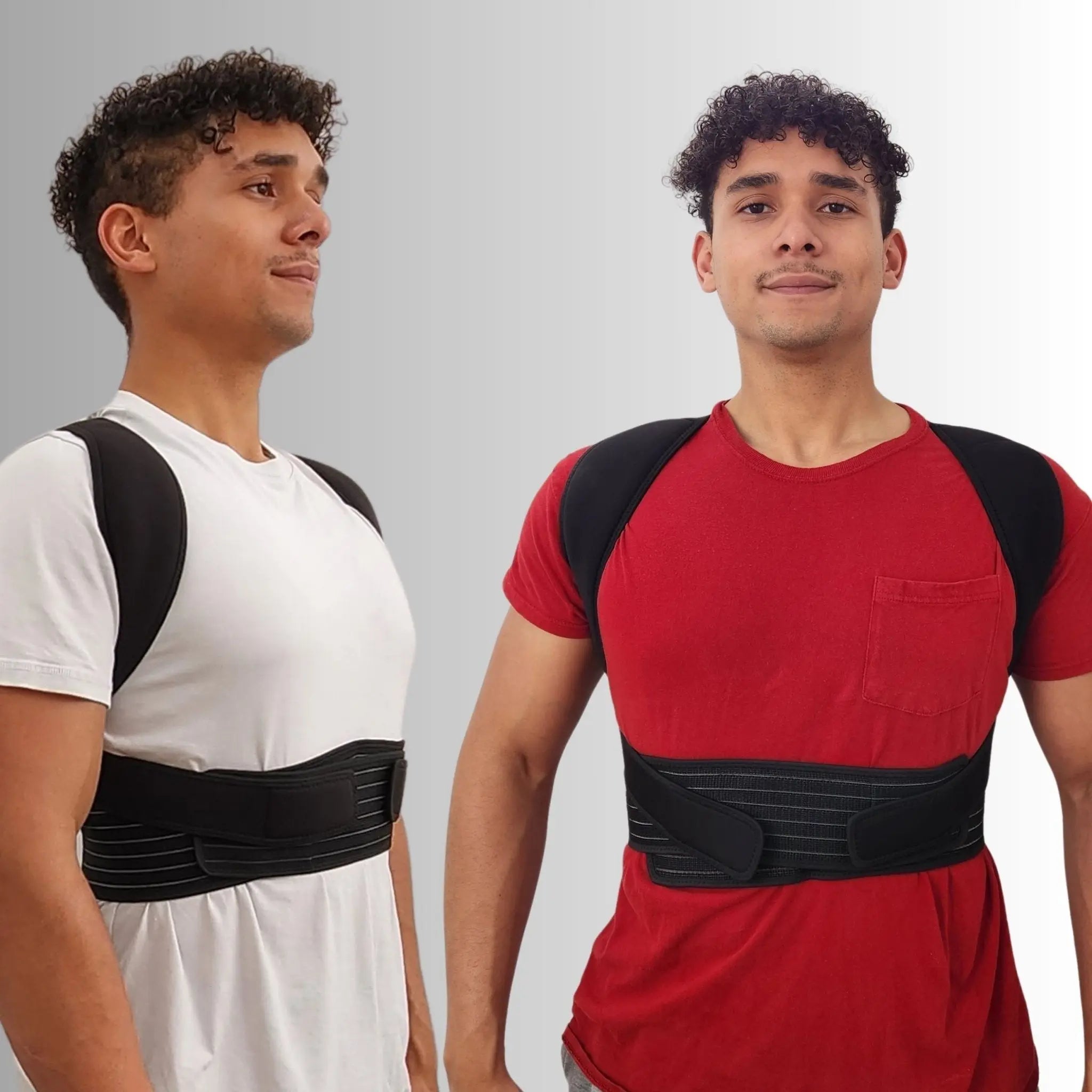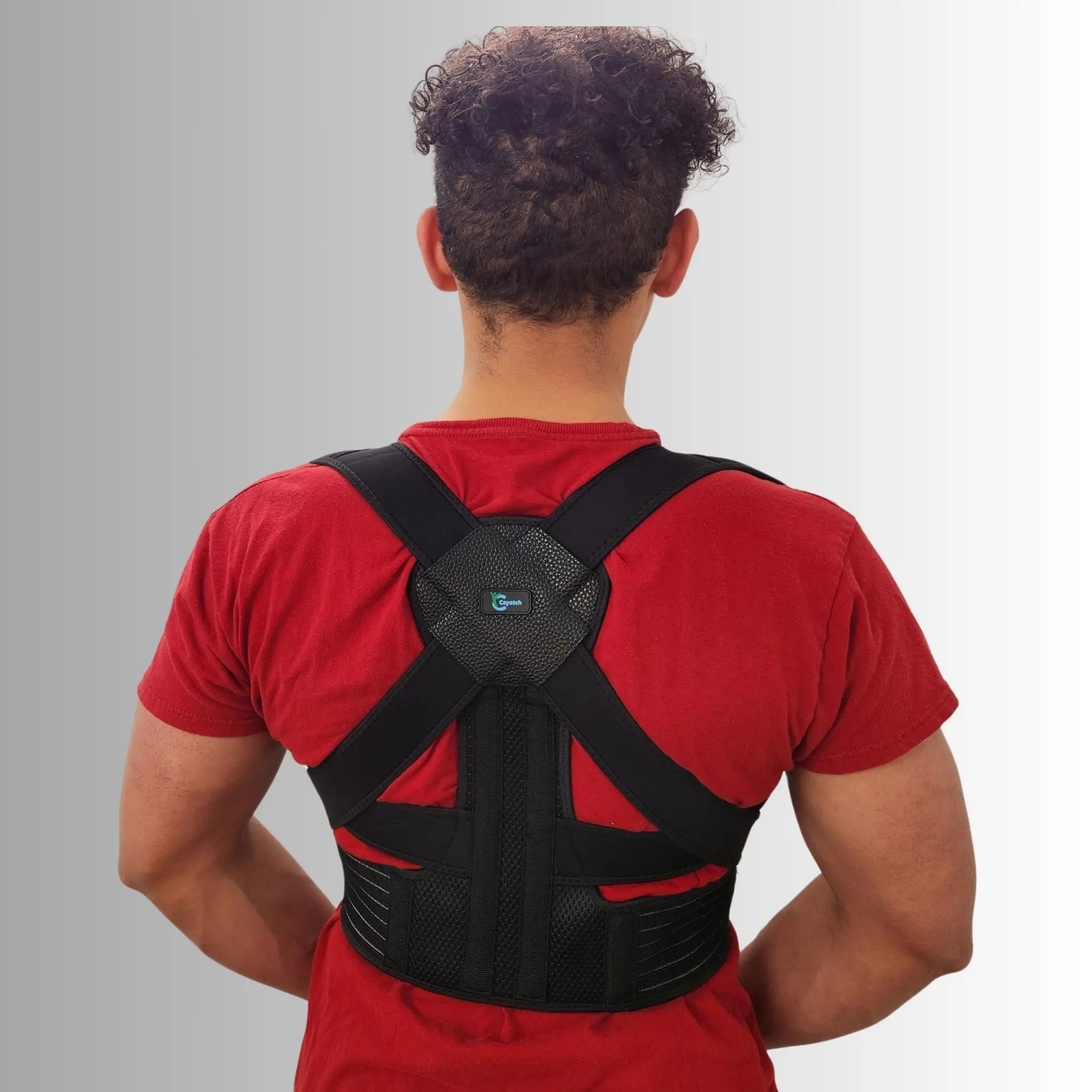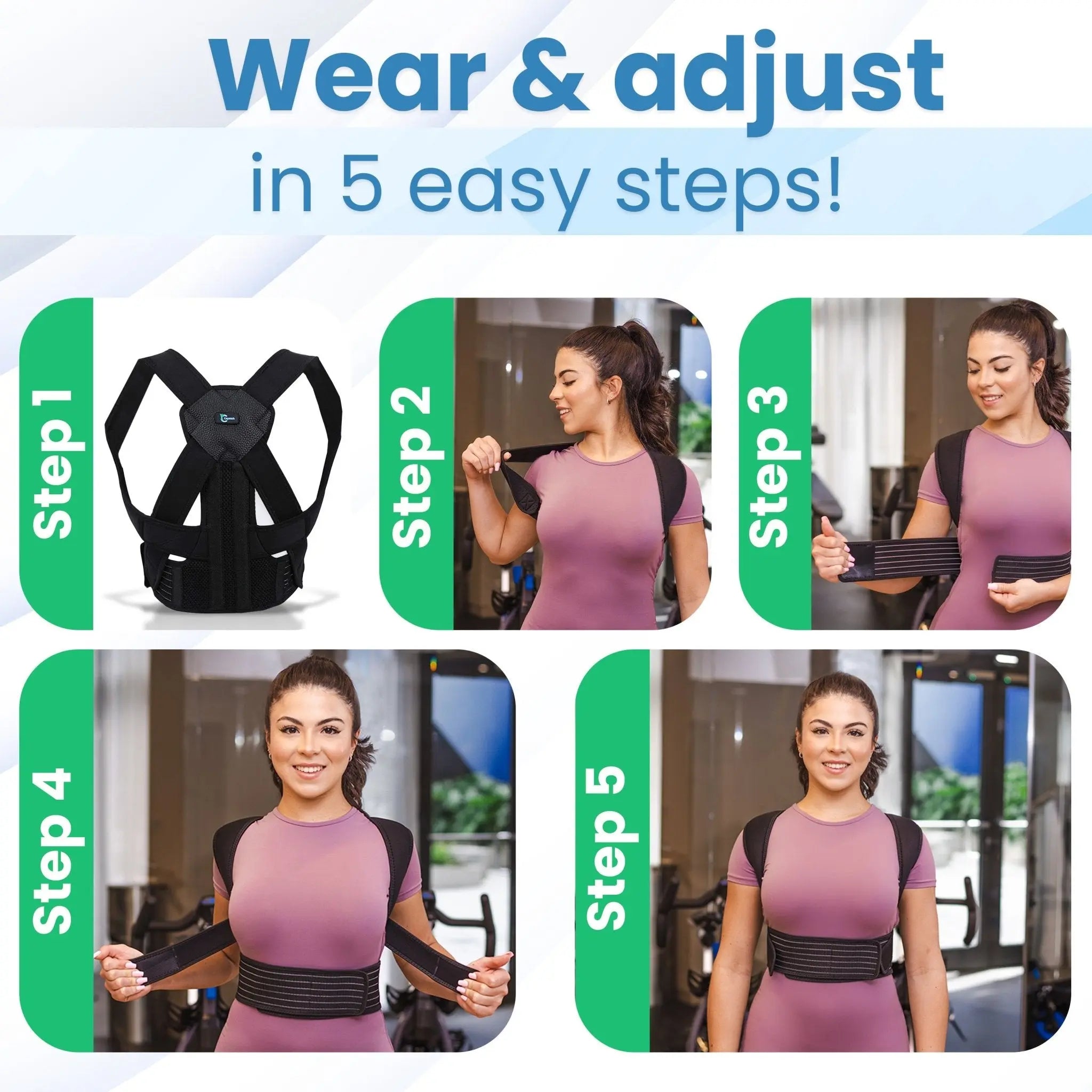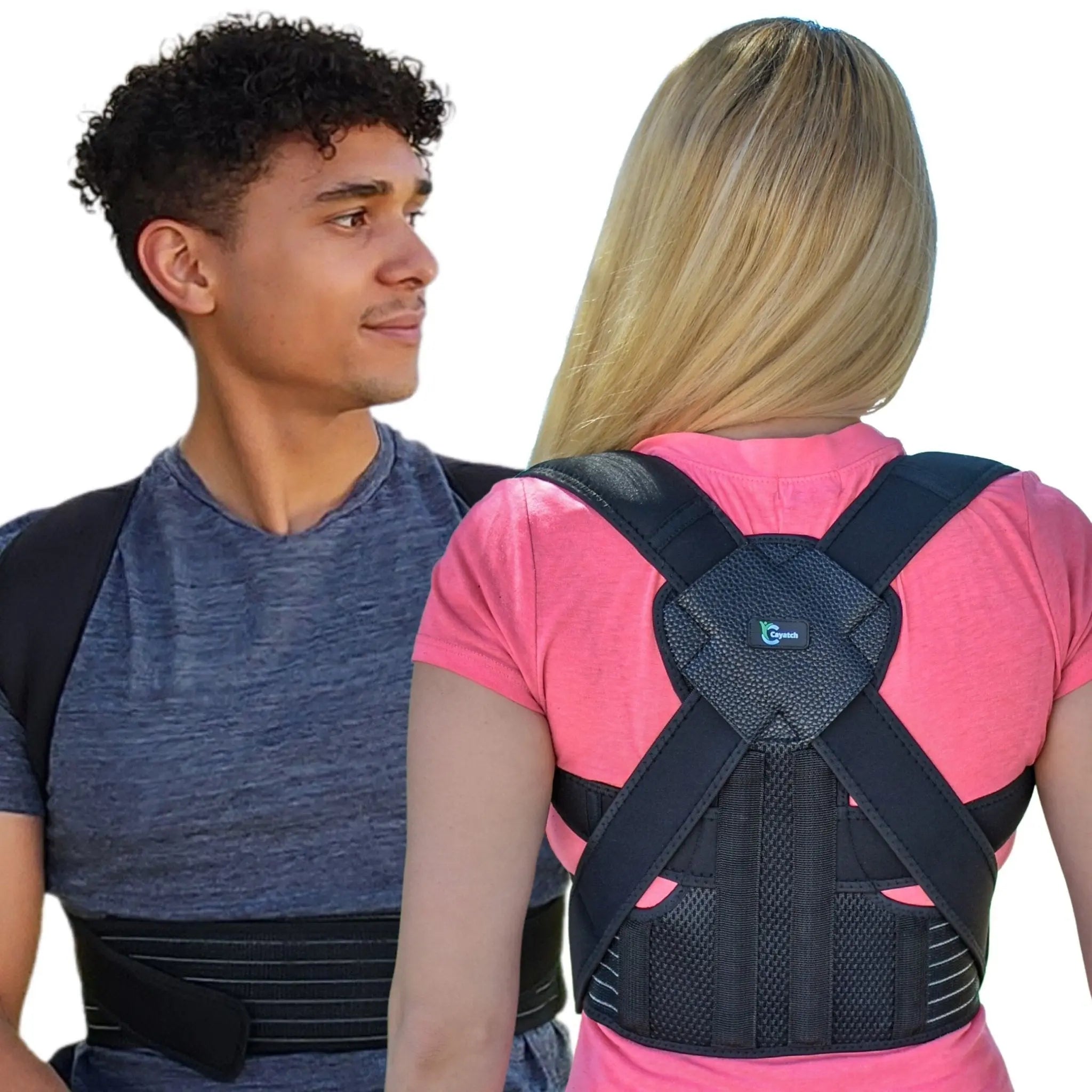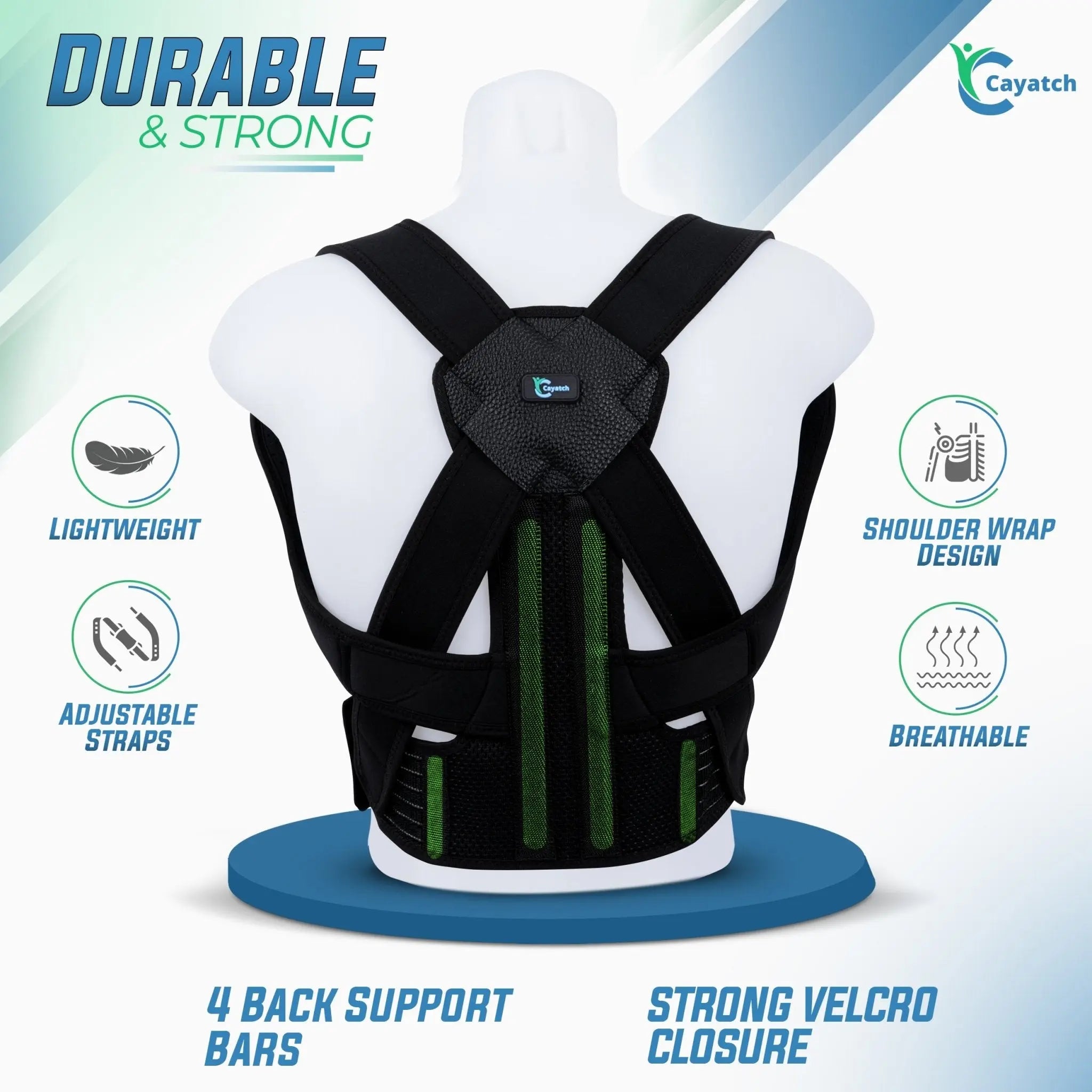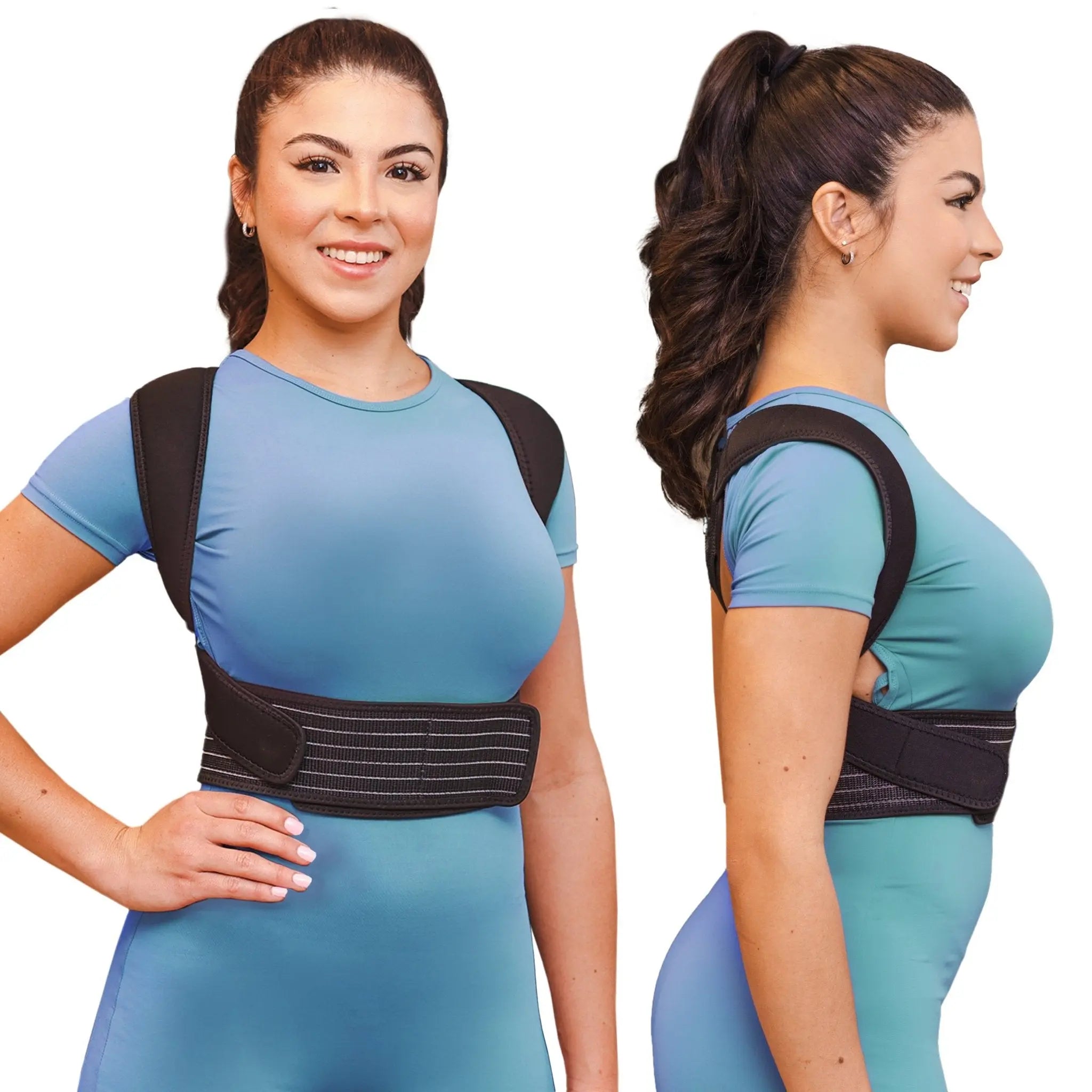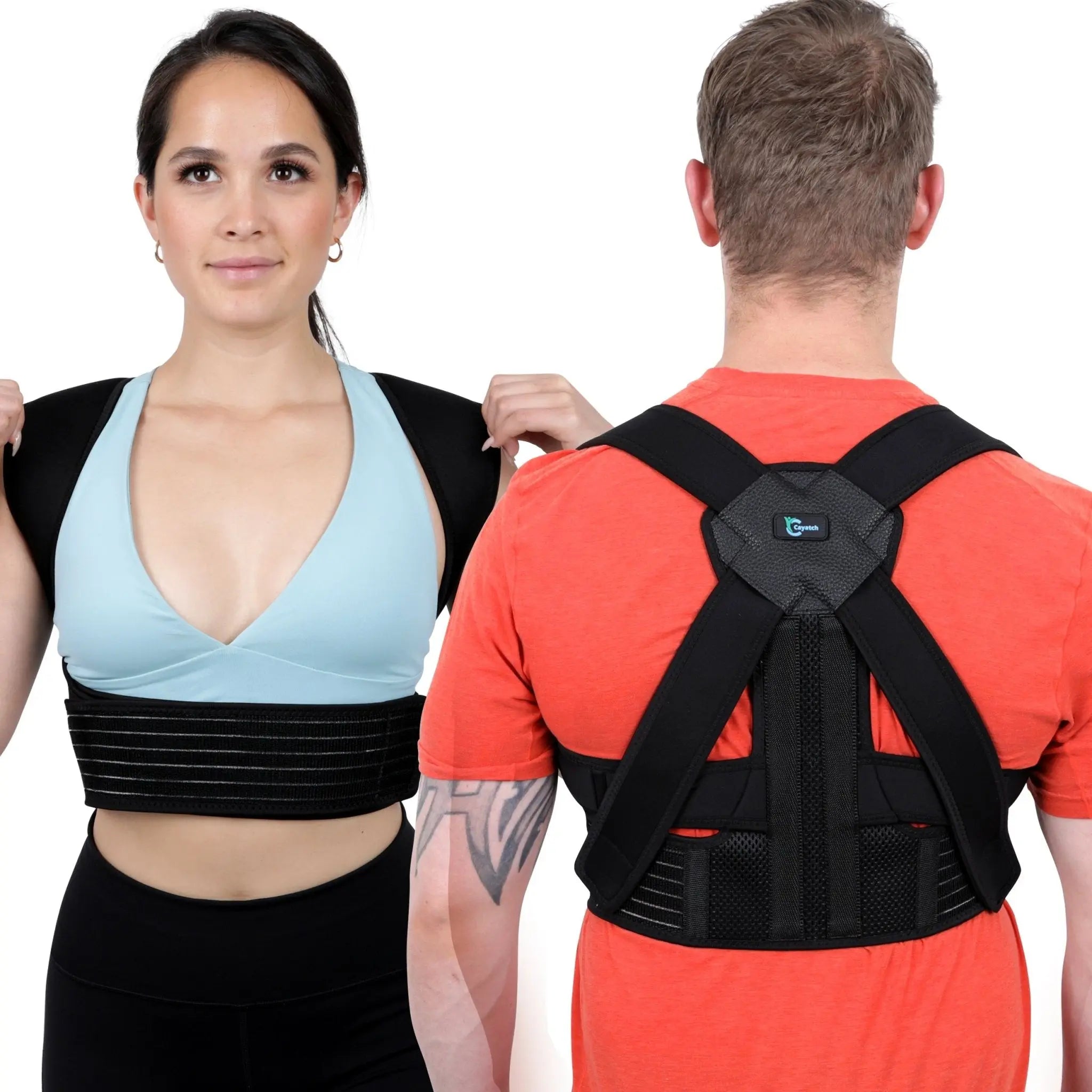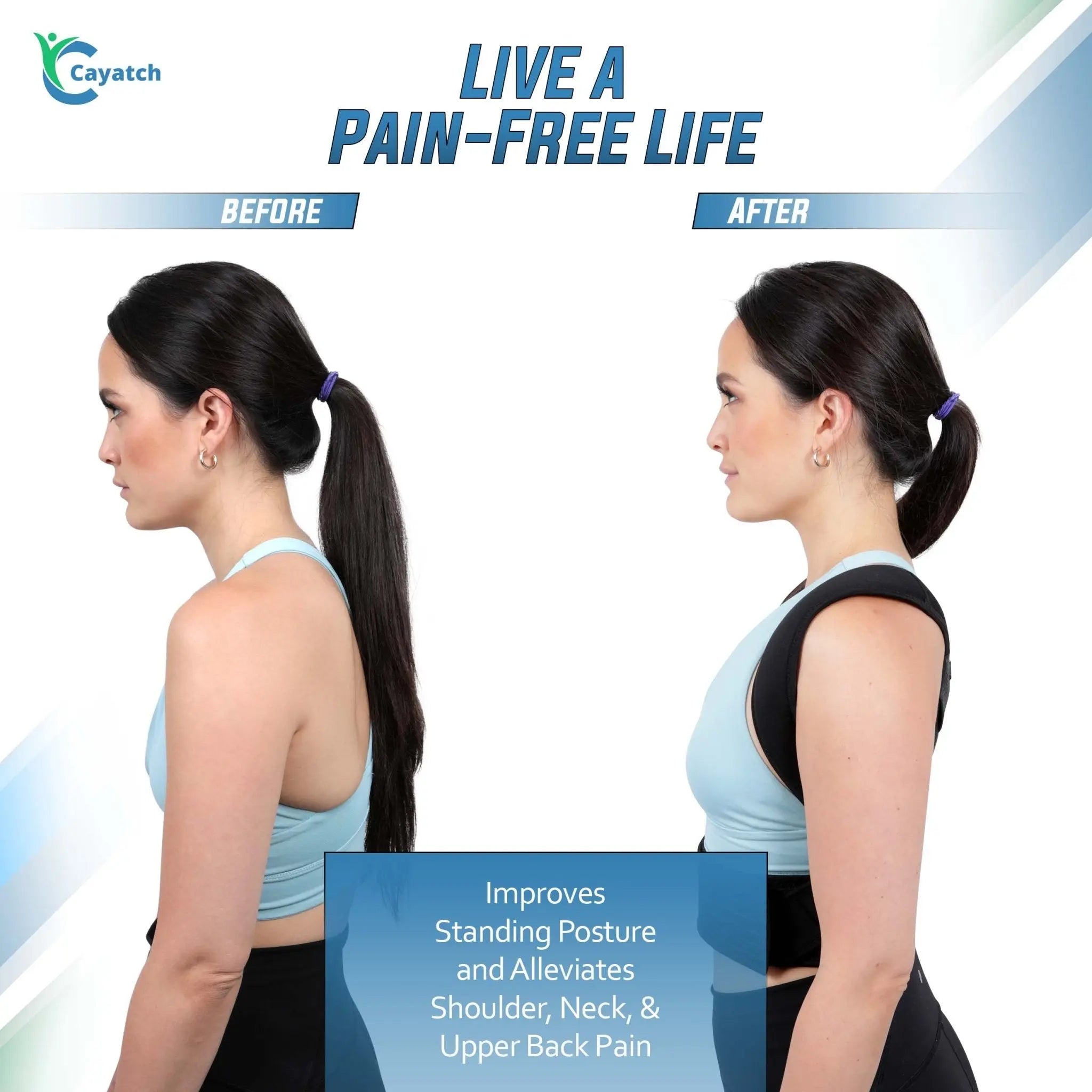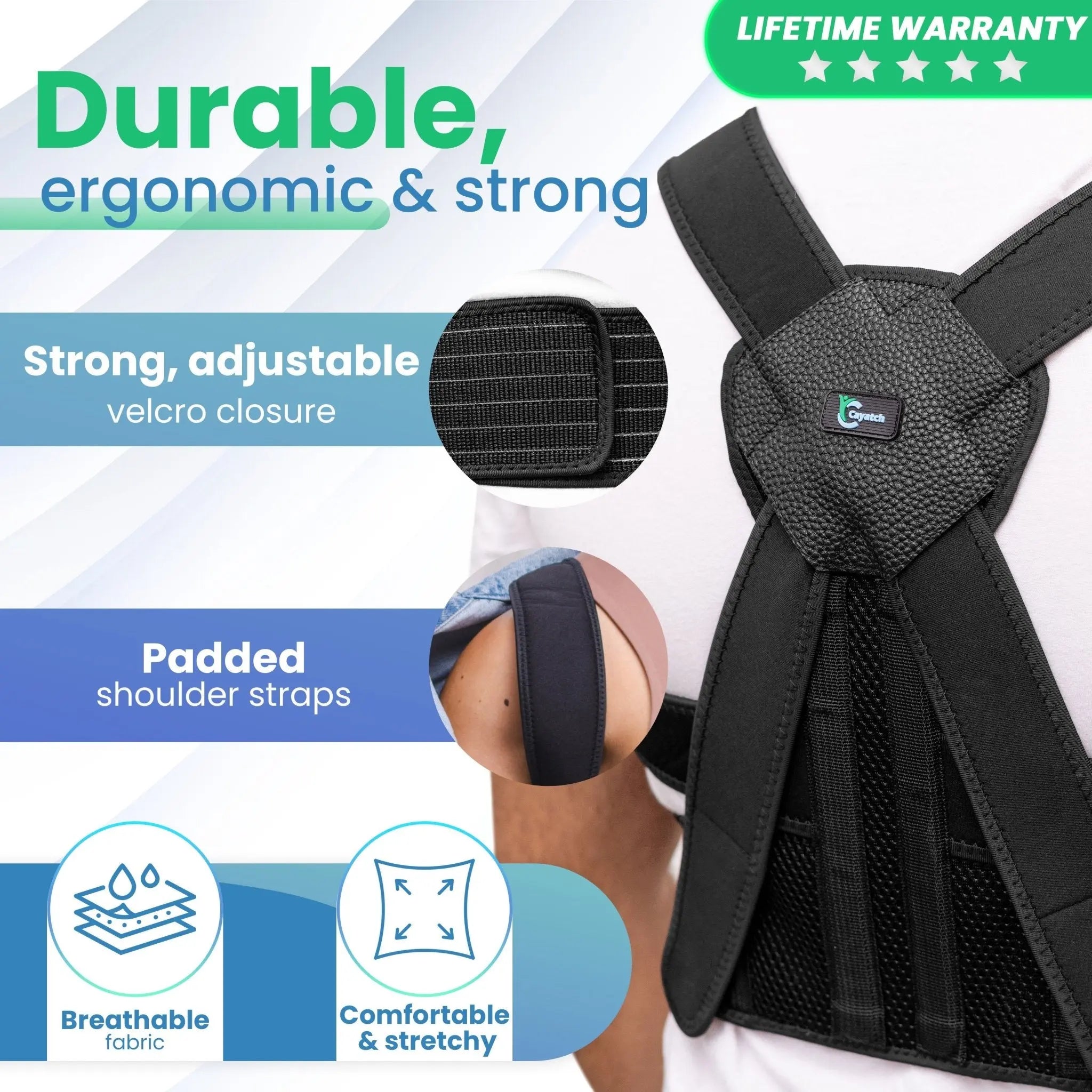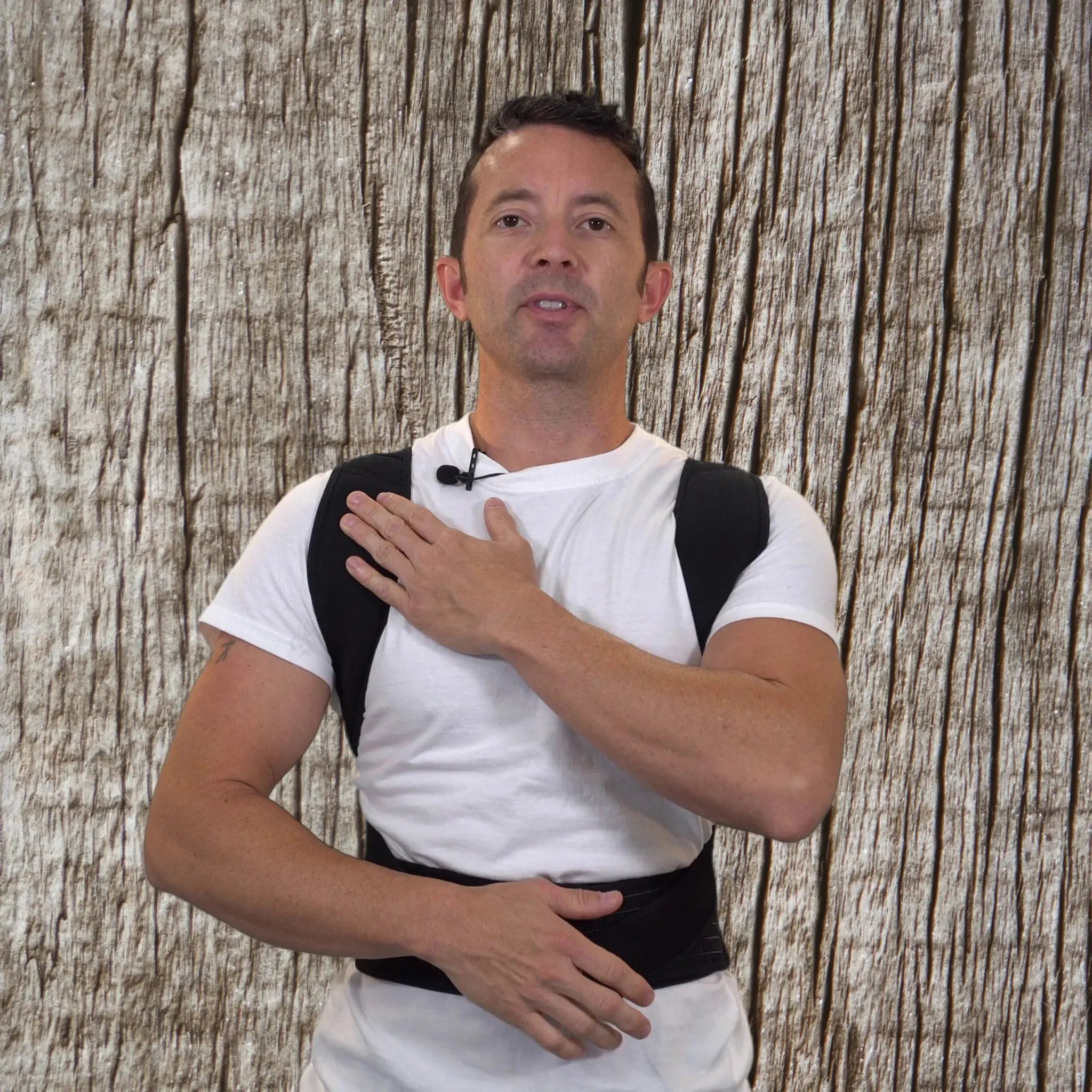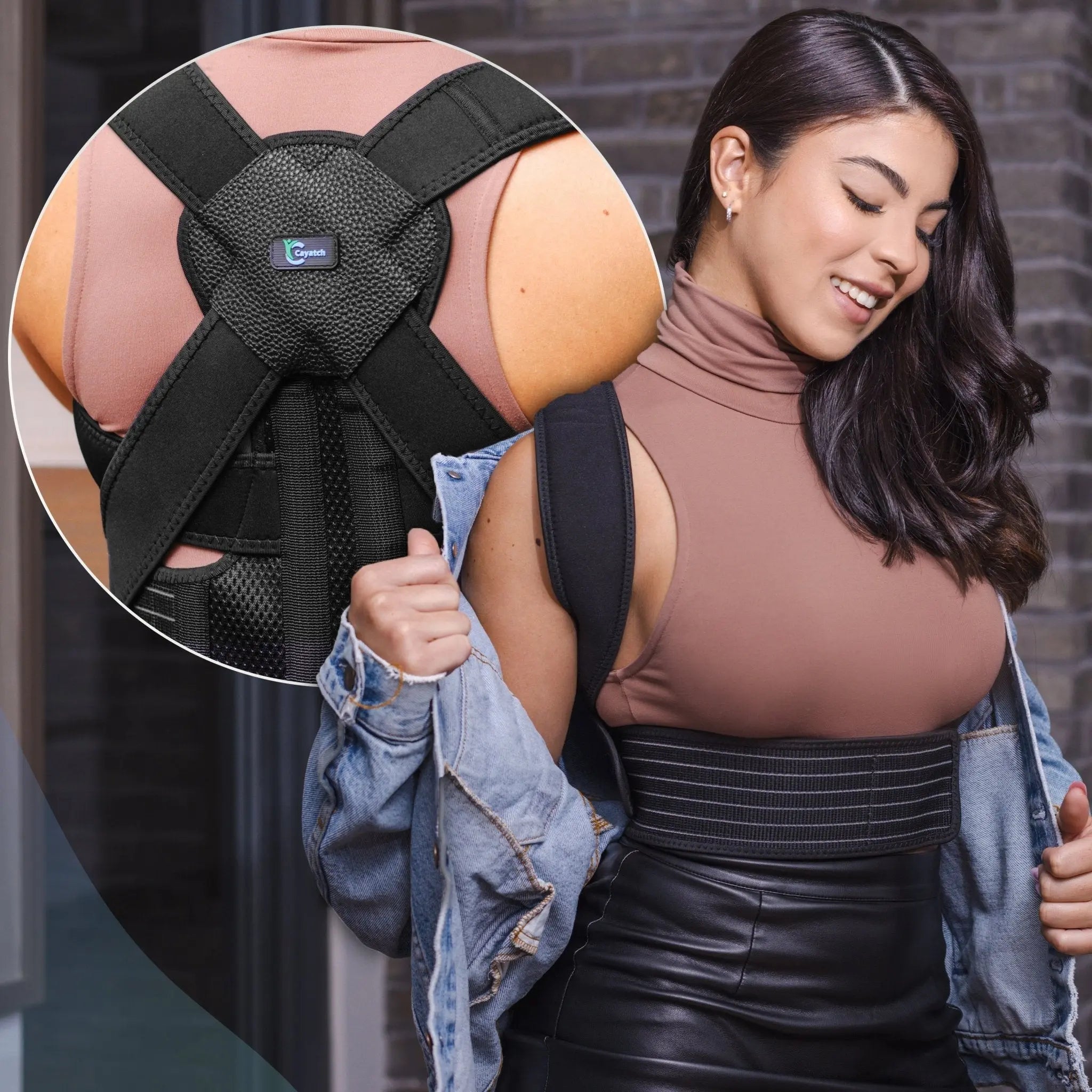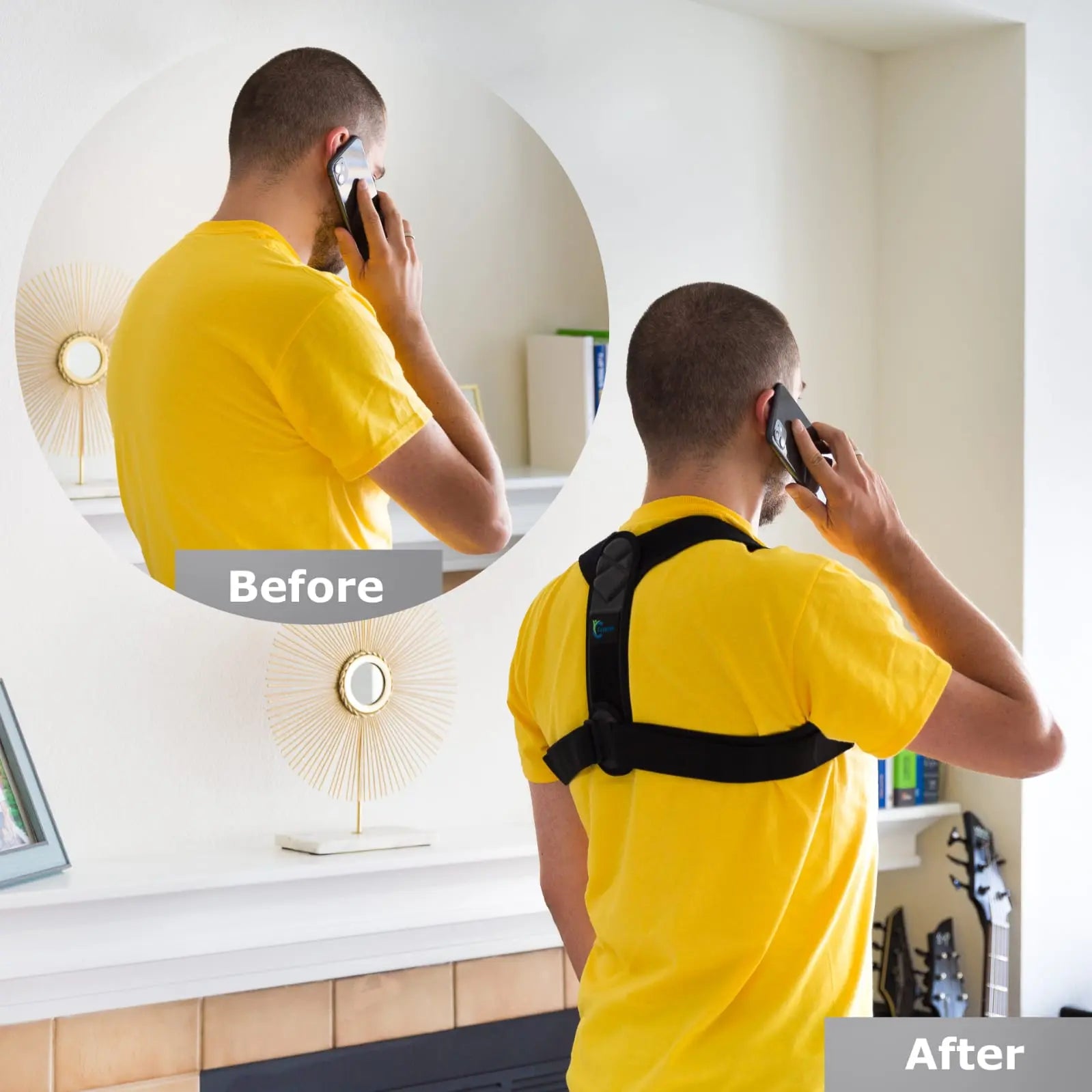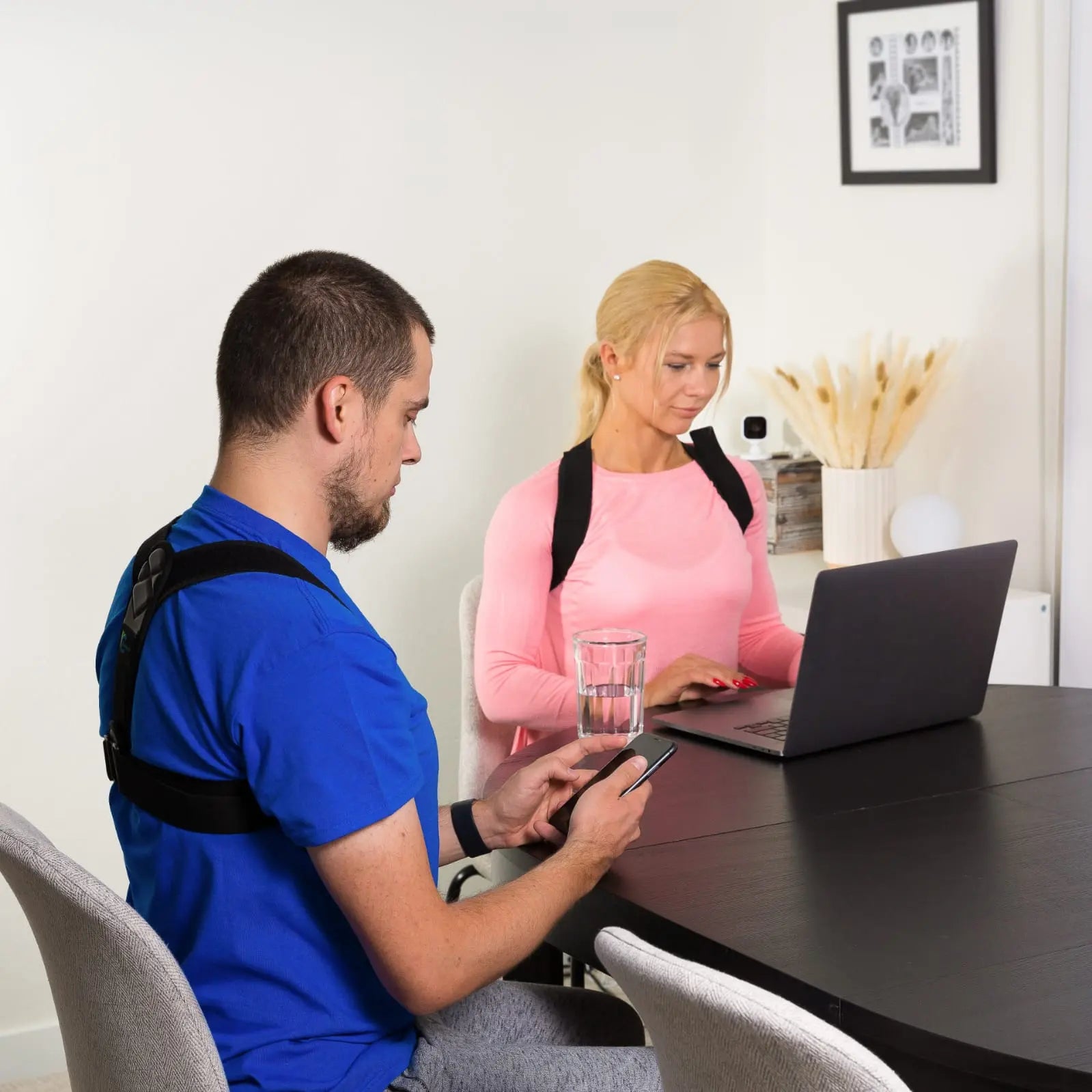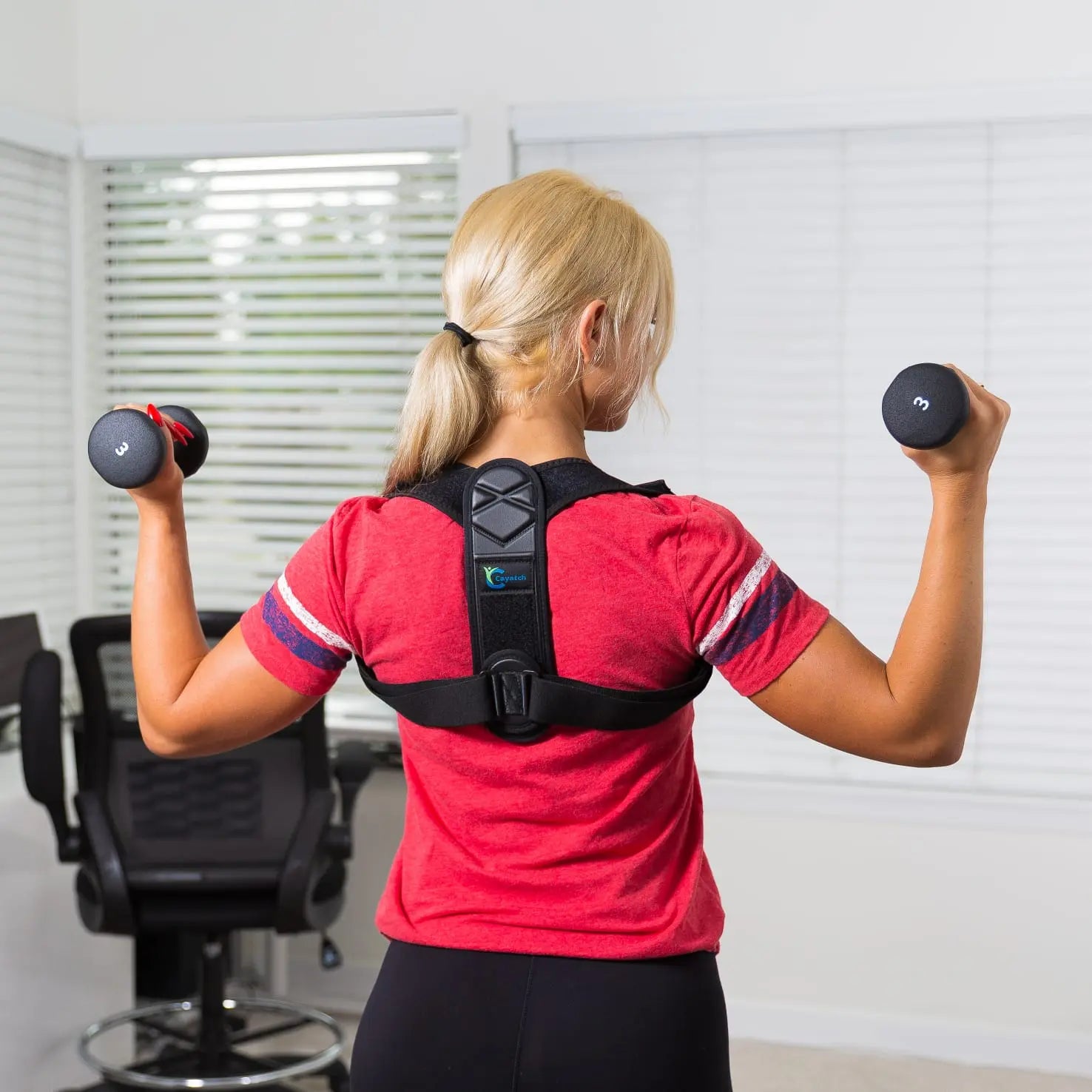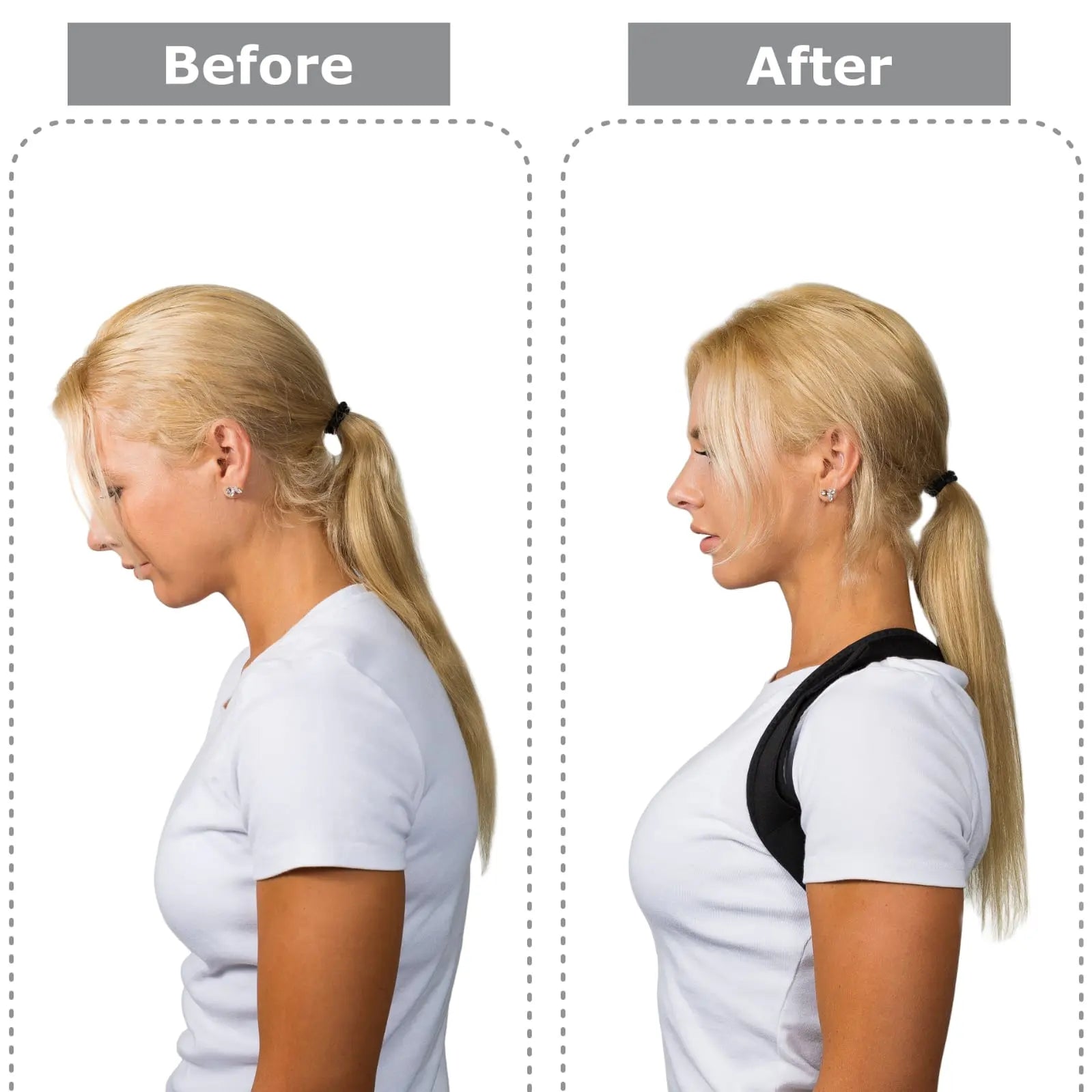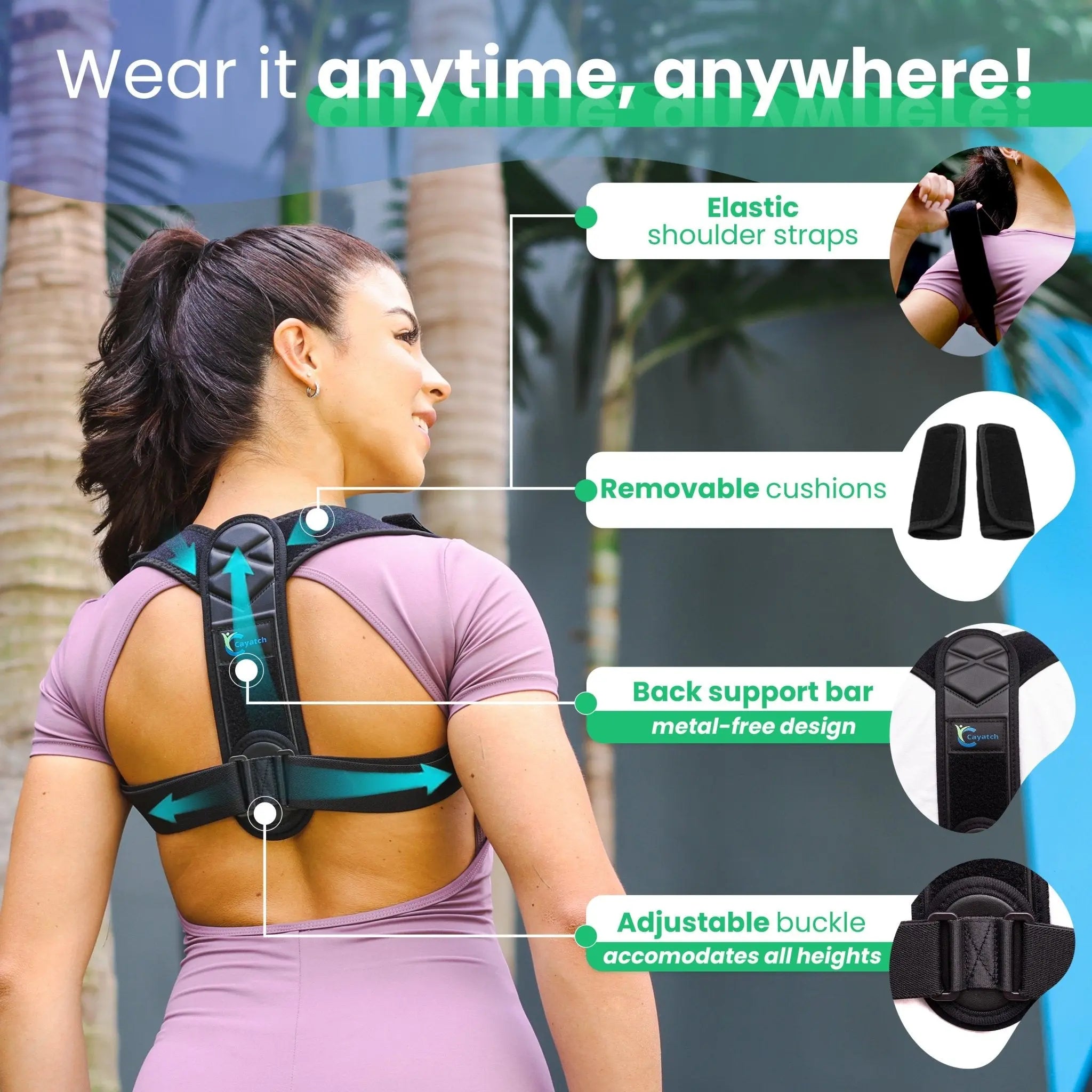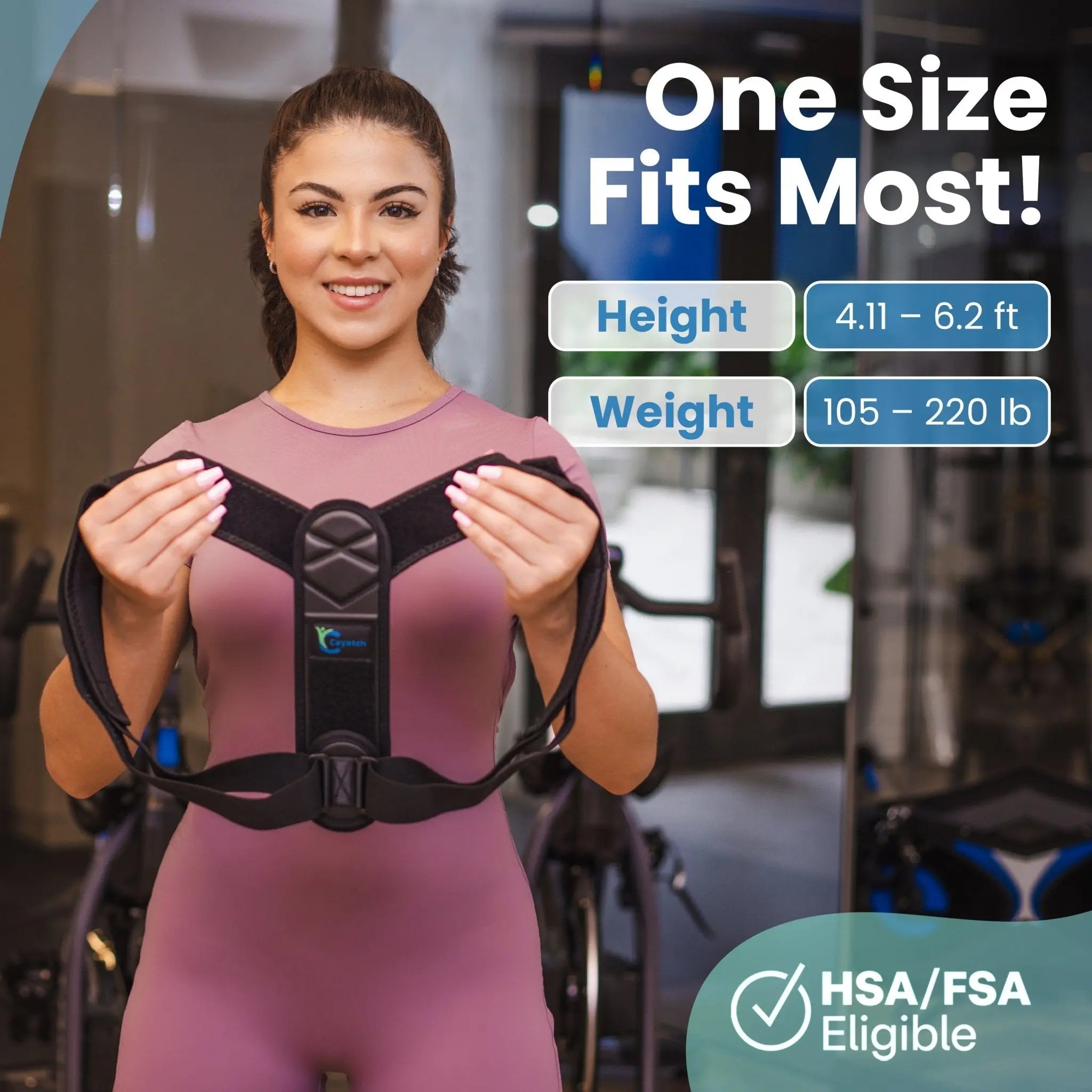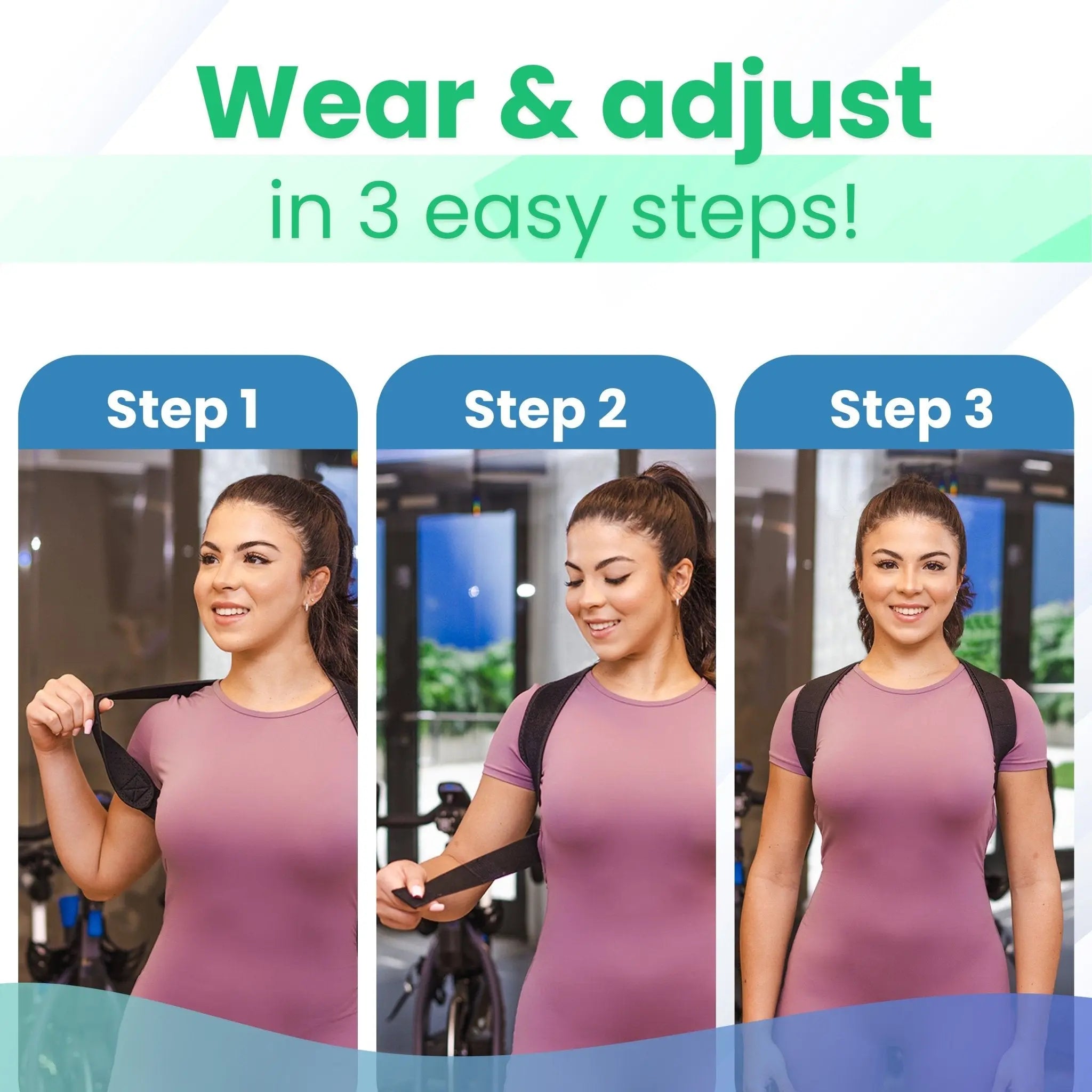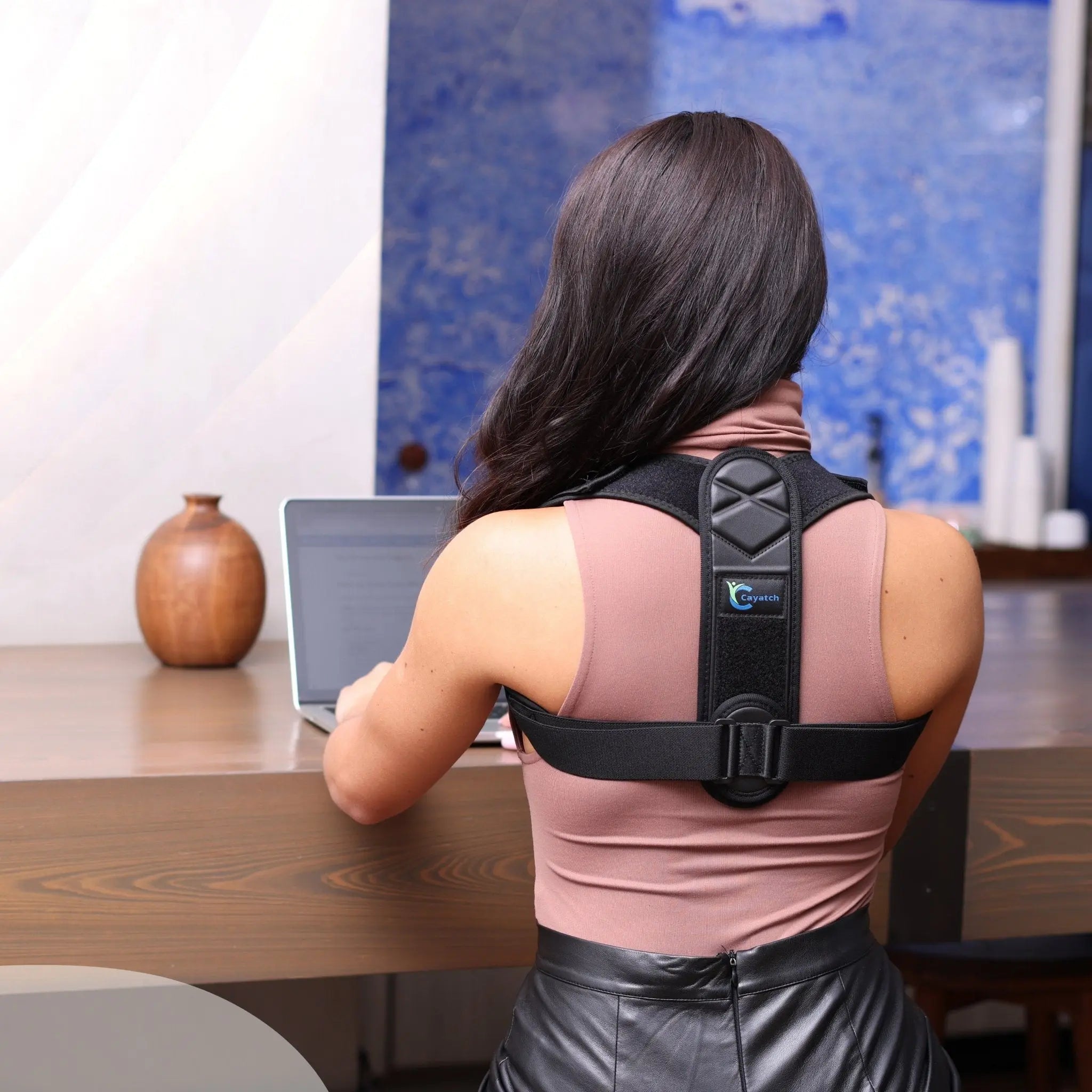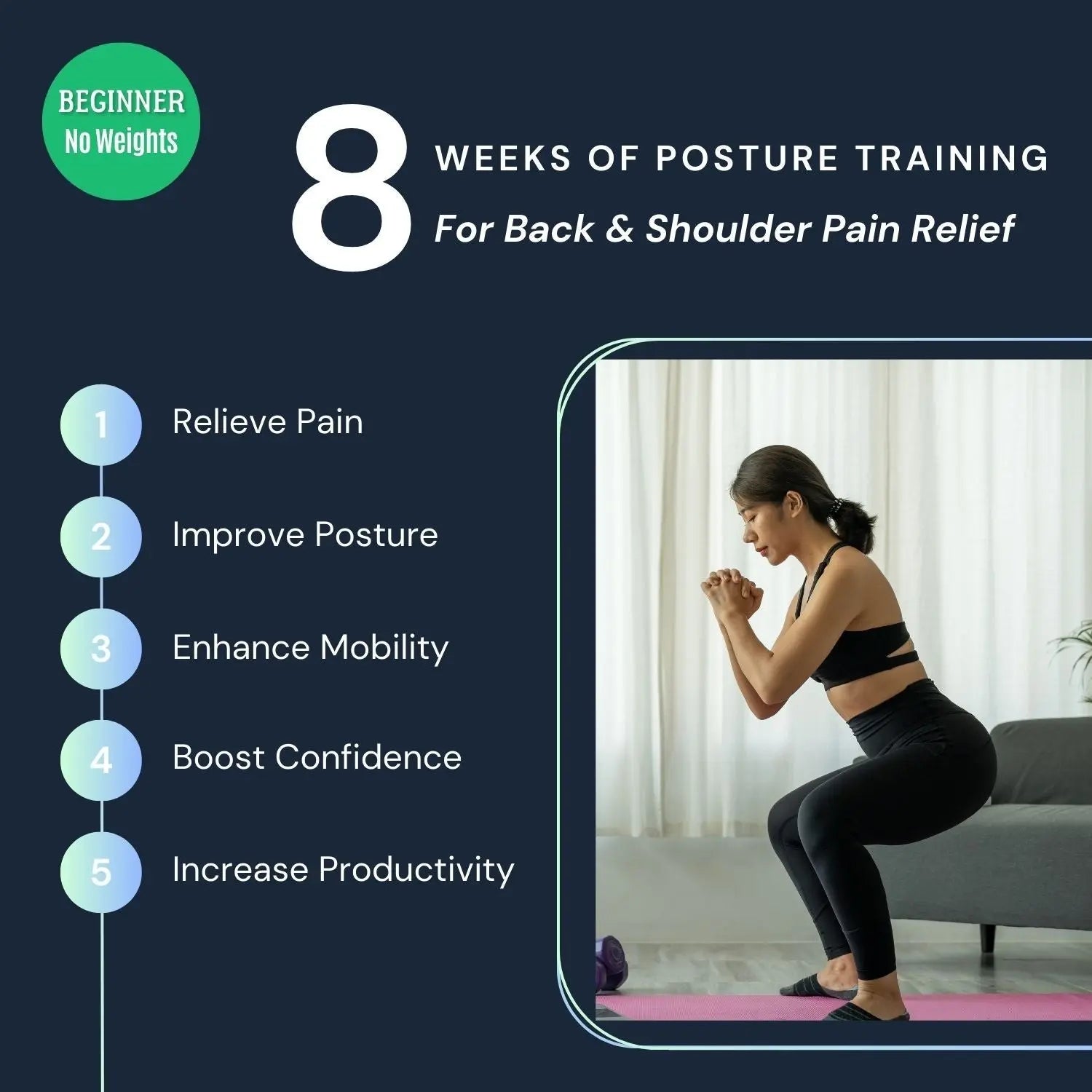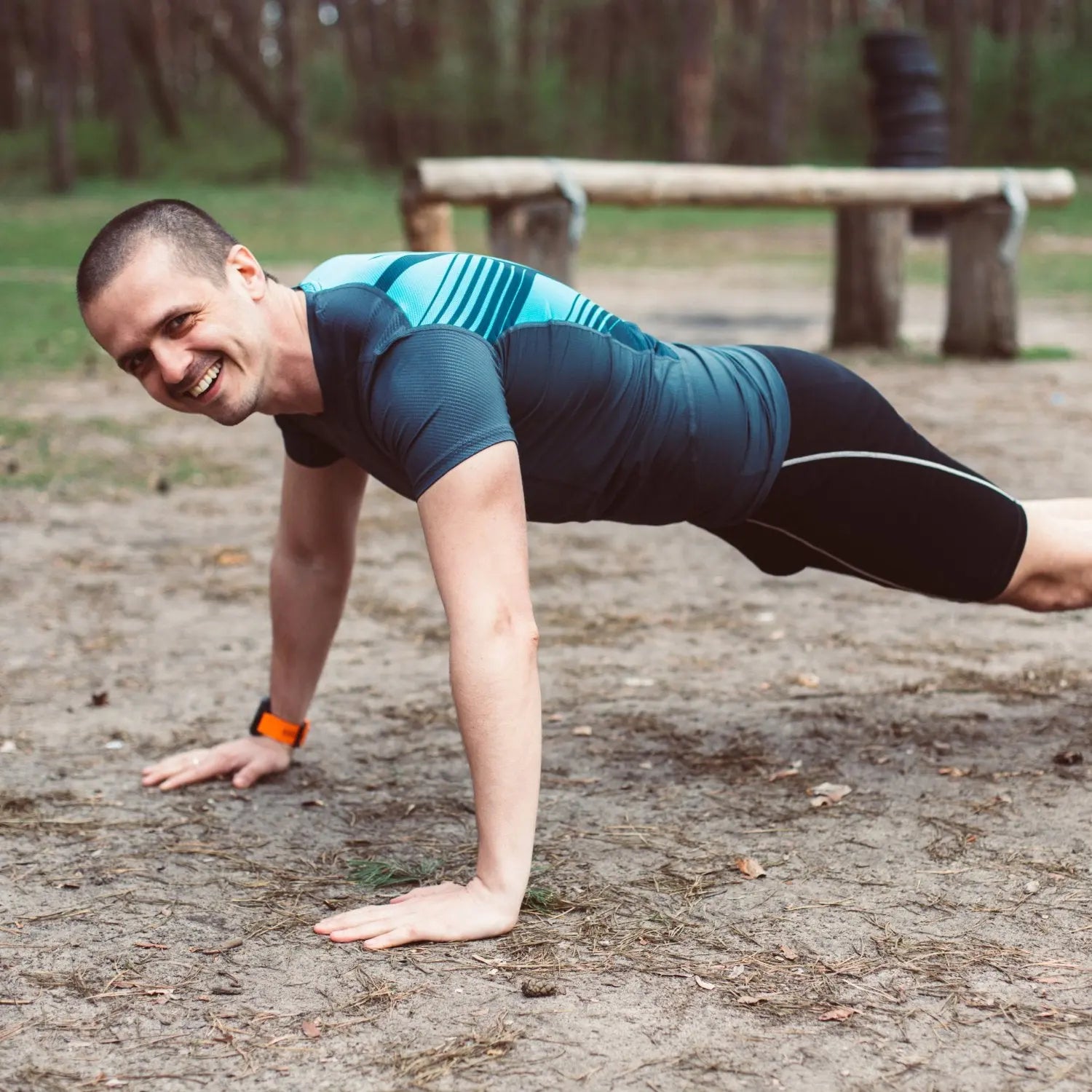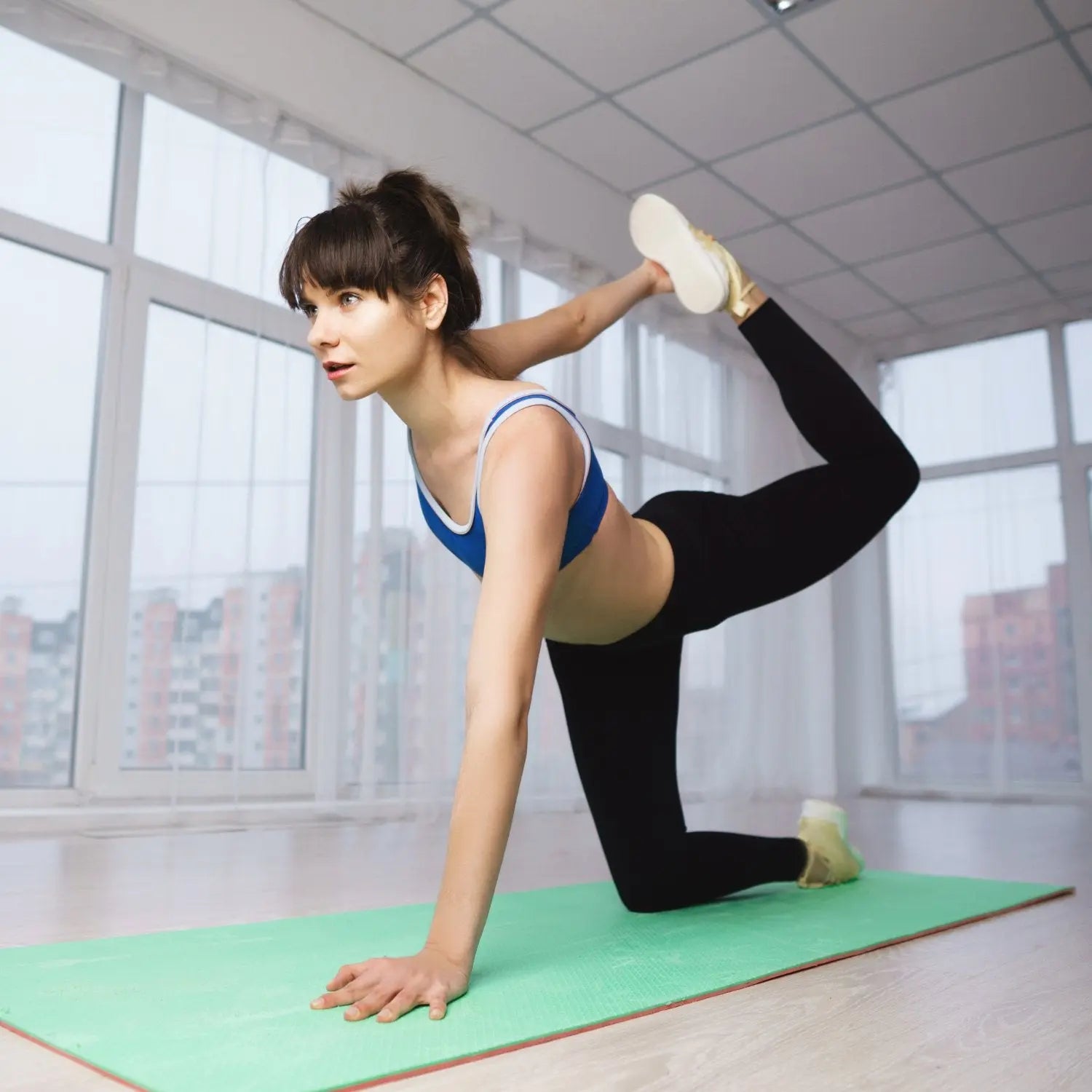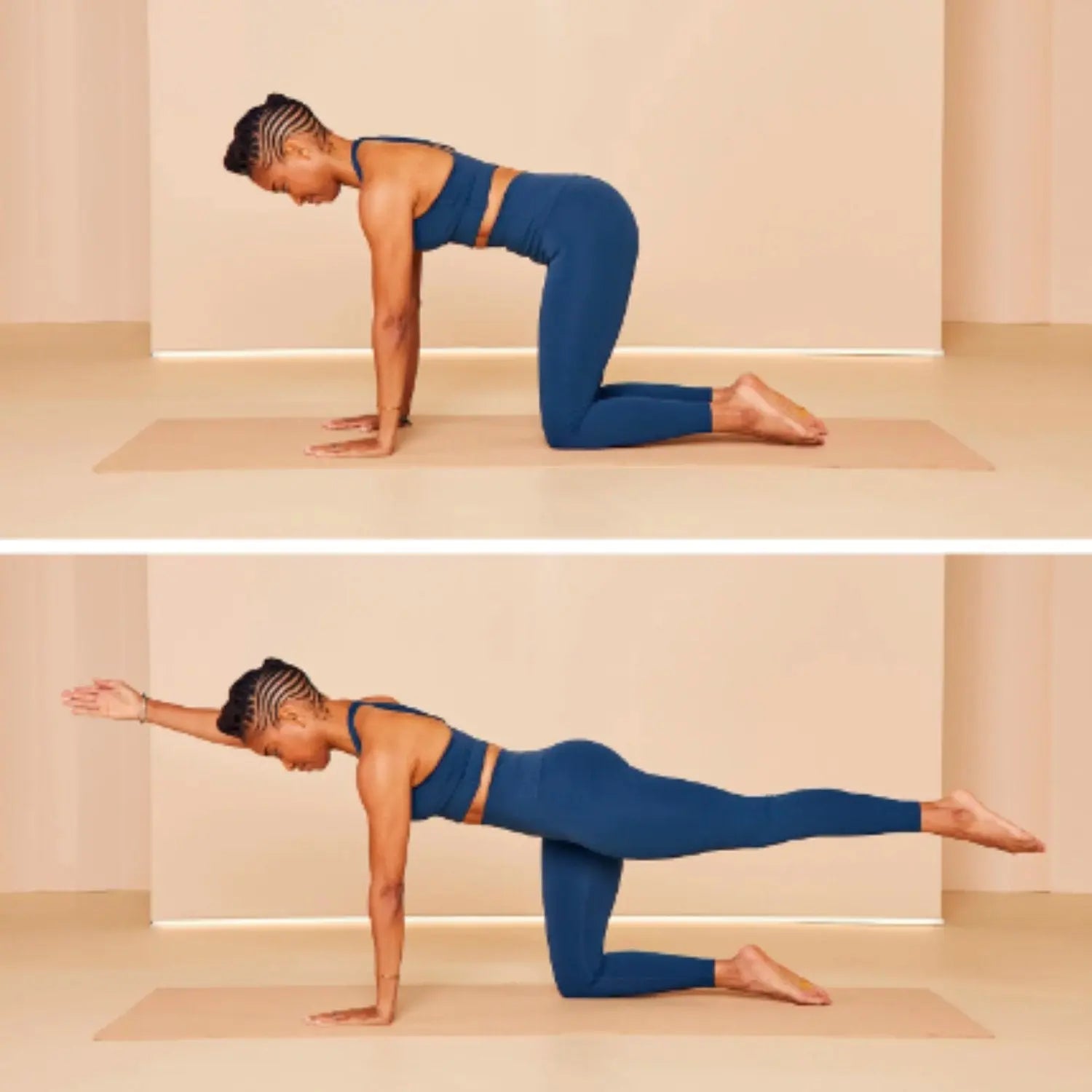12 Effective Exercises To Improve Your Posture

The importance of maintaining proper posture is sometimes overlooked in the flurry of today's busy lifestyles. However, it is crucial to our well-being and a significant source of self-assurance.
As the number of individuals using cell phones rises, so does the prevalence of slouched shoulders and downward gaze as a result of prolonged texting. This type of cell phone use has been linked to a host of health problems, including osteoarthritis, neuropathy, and tension headaches.
Fortunately, we can actively work to improve our posture and, in turn, our health and self-esteem. So, today, we will share 12 posture improvement exercises that work like magic in achieving your truest form. Let’s get started!
12 Posture Improvement Exercises

According to a recent study on the topic of a sedentary lifestyle in the U.S, 29 percent of Hispanic adults were found to be the least physically engaged, while Asian Americans were the most physically active at 17%. Other ethnic groups fell in between.
If this scares you, don’t worry. Here, we have identified 12 exercises that will aid in improving your posture and reducing the risk of these adverse effects.
Neck and Upper Back Posture Exercises
Recent evidence suggests that exercises targeting the neck and upper back are crucial for spinal health and pain prevention.
By restoring proper posture and alignment, they assist in relieving stress and discomfort associated with contemporary living. So, here are a few exercises that target your neck and upper back:
1. Chin Tucks
Chin tucks, a straightforward neck exercise, have been shown to be useful in strengthening neck muscles and enhancing posture. They require inwardly angling the chin toward the neck.
Benefits:
- Better cranial alignment.
- Easing of tension-induced headaches.
- Increased strength in the neck muscles.
Instructions:
- Relax your shoulders and maintain an upright posture.
- Without raising or lowering your head, gently tuck your chin in against your neck.
- Hold this position for 5-10 seconds.
- Let your head and neck relax.
- Repeat this set of reps ten to fifteen times.
2. Neck Tilts

Tilting your head from side to side helps increase flexibility in the neck, reducing stress in that area and enhancing mobility for your daily tasks.
Benefits:
- Improved mobility in the neck.
- Reduction of stiffness.
- Enhancement of the side neck posture.
Instructions:
- Relax your shoulders and maintain an upright posture.
- Gently bring one ear toward one shoulder.
- Hold this posture for 15 to 20 seconds to stretch the other side of your neck gently.
- Return your head to its original position.
- Repeat the same on the opposite side.
- Perform three stretches on each side.
3. Neck Rolls
Neck rolls are gentle movements that promote circular motion to relieve tension in the neck and upper back. They also enhance mobility, allowing you to perform regular tasks without pain.
Benefits:
- Increased unrestricted movement of the neck.
- Relaxation of neck and shoulder muscles.
- Effective pain management.
Instructions:
- Maintain an upright posture.
- Slowly move your head around in a circle, first in a clockwise direction and then in the opposite direction.
- Repeat the motion for a total of 5-10 times.
- Maintain a calm and steady pace.
Shoulder Strengthening Exercises
When it comes to your upper body, nothing is more important than regular shoulder strengthening exercises. Building up your shoulder strength is a great way to improve your mobility.
Here are a few shoulder-strengthening exercises that you can try:
4. Shoulder Blade Squeezes
Squeezing your shoulder blades together can help you build strength in the muscles that support your shoulders and prevent slouching.
Benefits:
- Stronger shoulder support.
- Improved posture.
- Reduced discomfort in the upper back.
Instructions:
- Relax your arms and let them hang loosely by your sides while you sit or stand.
- Allow your shoulders to drop back.
- Pull your shoulder blades toward your spine and squeeze them together.
- Maintain this squeezing motion for five to ten seconds.
- Relax your shoulders.
- Aim for ten to fifteen repetitions.
5. Wall Angels
Wall angels are an excellent way to improve shoulder range of motion and straighten up your back. The motion is meant to be similar to pressing one's arms and shoulders against a wall.
Benefits:
- Greater range of motion in the shoulders.
- Modified stance.
- Curbs the development of rounded or hunched shoulders.
Instructions:
- Maintain a straight back and a hip-width stance in front of a wall.
- Raise both arms to shoulder level, bending at the elbows so that your wrists and elbows are in contact with the wall.
- In a slow, comfortable motion, move your arms up the wall as high as you can.
- Then, while still touching the wall, reverse the action and bring your arms down.
- Aim for three sets of 10-12 reps, gradually increasing reps and range of motion between each set.
6. Shoulder Rolls

Shoulder rolls are basic exercises that are great for decreasing stiffness because they help alleviate tension and promote fluid motion in the shoulders.
Benefits:
- Increased flexibility in the shoulder joint.
- Loosening of the shoulders.
- Reduction of tension in the shoulders.
Instructions:
- Keep your arms relaxed by your sides while you stand or sit.
- Rotate your shoulders forward in a circular motion for 10 to 15 seconds.
- Then, rotate your shoulders backward for the same duration, 10 or 15 seconds more.
Core Strengthening Exercises
Stabilizing the spine, enhancing posture, and improving balance are all benefits of regular core-strengthening training.
Recent research has demonstrated that athletes' physical strength (core endurance and balance) improved substantially as a result of core training. Having a strong core is easy with these exercises:
7. Planks

The abs, obliques, and lower back are all worked on in a plank, making it an excellent exercise for building a strong core. They aid in back support and encourage correct posture.
Benefits:
- Improvements in abdominal strength.
- Achieving a more stable spine.
- Reduced likelihood of lower back discomfort.
Instructions:
- Set your body to perform a push-up, going down on the ground on your hands and knees.
- Contract your abs to activate your core muscles.
- Start by holding the plank posture for 20 to 30 seconds and work your way up to a longer time.
- Maintain a steady rate of breathing.
- Aim for three sets of planks.
8. Dead Bug Exercise

The Dead Bug is an ab and lower back strengthening exercise, which is why it is called a "core" exercise. It strengthens the abdominal muscles, making it easier to stand up straight.
Benefits:
- Stronger abs and back.
- Additional help in maintaining an upright position.
- Reduction of lower back stress.
Instructions:
- Lie on your back. Position your feet off the ground and bend your knees at 90 degrees.
- Raise your arms above with your palms together.
- Keep your lower back flat on the floor as you bring your right arm and left leg toward the floor.
- Return to the starting position and repeat on the other side.
- Aim for 10 repetitions on each side and complete three sets.
9. Bird-Dog Pose

The bird-dog pose is a popular yoga pose due to its beneficial effects on core strength, balance, and posture.
Benefits:
- Enhanced strength in the core.
- Improved posture.
- Reduced likelihood of lower back discomfort.
Instructions:
- Get down on the floor in a tabletop position using your hands and knees.
- Extend your right arm forward and your left leg backward, keeping your arms and legs parallel to the ground.
- Use your abdominal muscles to help you stay upright.
- Hold for a second or two, then return to the starting position.
- Switch arms and legs to complete the routine.
- Aim for 10 repetitions on each side and complete three sets.
Lower Back And Hip Mobility Exercises
Flexibility, stress relief, and back pain prevention can all be achieved with regular practice of hip and lower back mobility exercises.
They are necessary for healthy and pain-free everyday living because of the function they play in mobility and posture. Now, we will share three exercises to gain these advantages:
10. Child's Pose

This yoga-inspired stretch gently targets the lower back, hips, and thighs. It's a typical yoga pose for relaxation after a session.
Benefits:
- Stretches and relaxes the lower back, reducing stiffness.
- Encourages calm and relaxation.
- Great for enhancing hip flexibility.
Instructions:
- Get into the tabletop position and kneel down on your hands and knees.
- Sit back on your heels while stretching your arms forward.
- Bring your forehead to the floor.
- Adjust the position of your legs, keeping them wide apart or close together, based on your comfort level.
- Hold the position for 20-30 seconds or longer if desired.
11. Pelvic Tilts
A pelvic tilt, performed while lying on your back, involves moving your pelvis forward and backward. It aids in strengthening the lower back and correcting pelvic misalignment.
Benefits:
- Strengthening the lower back muscles through pelvic tilts provides more support for your lumbar spine.
- Promotes proper alignment of the pelvis.
- Encourages overall posture improvement through a neutral pelvic stance.
Instructions:
- Lie on your back with your feet flat on the floor and your knees bent.
- Keep your arms by your sides without tensing up.
- Inhale deeply and tilt your pelvis forward while arching your lower back.
- Exhale slowly, thrusting your pelvis downward and pressing your lower back flat on the floor.
- Aim for three sets of 10-15 repetitions.
12. Glute Bridges
This exercise, performed while lying on your back, helps strengthen your glutes by lifting your hips off the floor. It targets the gluteal muscles, lower back, and abdominals.
Benefits:
- Strengthening the gluteal muscles and lower back through glute bridges enhances lumbar spine stability.
- Assists in maintaining pelvic stability.
- Enhances hip mobility through improved flexibility.
Instructions:
- Keep your feet flat on the floor, hip-distance apart, and your knees bent.
- Keep your arms down at your sides.
- Maintain a straight line from your shoulders to your knees.
- Squeeze your glutes at the top of the motion.
- Lower your hips to the floor between sets without letting them touch.
- Aim for three sets of 12-15 repetitions.
Gym Exercises to Improve Posture
There are various types of exercises you can perform at the gym. Here are some specific ones that can help improve your posture:
1. Deadlifts

During a set of deadlifts, the muscles of the lower back, glutes, hamstrings, and core are all effectively engaged.
Benefits:
- Improves the strength of the hamstrings, glutes, and lower back.
- Enhances the strength of the abdominal and spinal erector muscles.
- Promotes a powerful, upright stance.
Instructions:
- Place your feet slightly wider than your hips, with toes pointed slightly outward.
- Keep your back and chest upright while bending forward at the hips and knees.
- Grasp the barbell with both hands, placing it between your legs.
- Lift the barbell with a flat back and straight body.
- Maintain an upright stance while slowly lowering the barbell to the ground.
- Increase the weight between sets, working up to 3-5 sets of 5-8 reps.
2. Bent-Over Rows

To strengthen your upper back, shoulders, and lats, consider incorporating bent-over rows. By reinforcing the muscles that retract and depress the shoulders, they contribute to improved posture.
Benefits:
- Strengthens the trapezius and rhomboids, which form the upper back.
- Enhances posture and shoulder stability.
- Helps prevent upper back discomfort and rounded shoulders.
Instructions:
- Stand with your feet shoulder-width apart, holding a barbell or a pair of dumbbells in front of your thighs.
- Hinge forward from the hips.
- Keep your back flat and chest up as you lower the weight toward the ground.
- Bend your elbows and squeeze your shoulder blades together to pull the weight toward your lower ribs.
- Lower the weight back down in a controlled manner.
- Complete 3-4 sets of 8-12 reps, focusing on maintaining good technique.
3. Face Pulls

You can target the muscles of the upper back and shoulders with face pulls. They are effective for counteracting the effects of rounded shoulders and promoting strength and balance.
Benefits:
- Enhances shoulder posture by building strength in the rear deltoids.
- Aids in correcting poor posture by pulling the upper back and shoulders back and apart.
- Alleviates tension in the upper back and neck.
Instructions:
- Secure a rope handle to the height of your shoulders on a cable machine.
- Face the machine and grab the rope with both hands, palms down.
- Step back slightly.
- Lift your sternum and lead with your elbows as you pull the rope close to your face.
- Contract your shoulder blades together at the end of the motion.
- Gradually return the rope to its original position.
Frequently Asked Questions (FAQs)
Can you correct years of bad posture?
Yes, with the help of exercises, stretches, and conscious lifestyle changes, poor posture can be improved and corrected over time.
What exercise is best for correcting posture?
Exercises that strengthen the core muscles responsible for maintaining an upright posture, such as planks, rows, and deadlifts, are an excellent way to improve posture.
Can you fix bad posture with exercise?
Regular exercise targeting posture can strengthen muscles and improve alignment, leading to a more upright and healthy posture.
How can I improve my posture in 1 month?
Consistent practice of posture exercises, maintaining ergonomic workspaces, and increasing awareness of one's posture patterns can yield noticeable results within a month.
How long does it take to correct posture with exercise?
It may take several weeks to a few months of regular exercise and adjustments to significantly improve posture.
How often should you do posture exercises?
Exercises for correcting poor posture should be performed at least three to four times a week, gradually increasing frequency, intensity, and duration as strength and posture improve.
Let’s Wrap It All Up!
Now that you have a clear understanding and eight exercises to improve your posture, you can make the most of this knowledge to maintain good posture for long-term health benefits.
To avoid future struggles, it is advisable to take proactive steps toward achieving optimal posture. All it takes is consistency and developing muscle awareness to restore proper alignment.


























